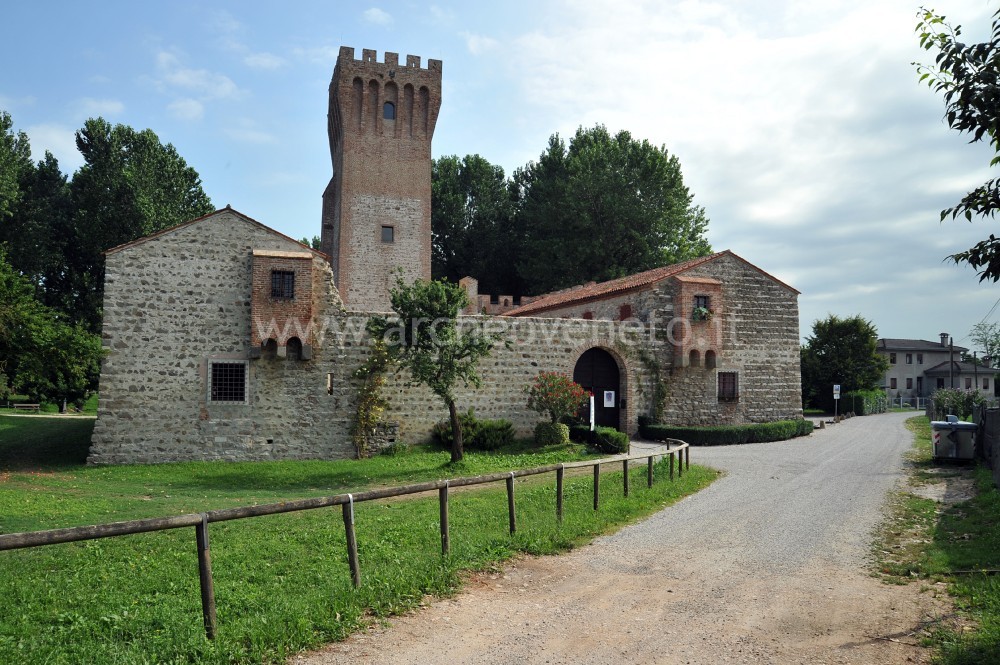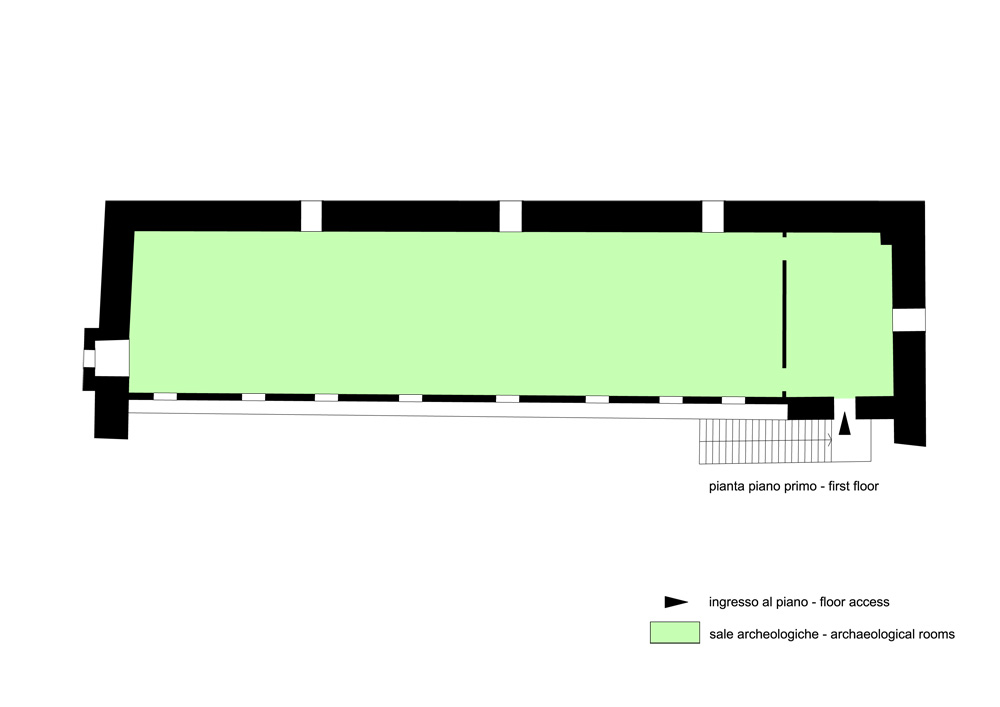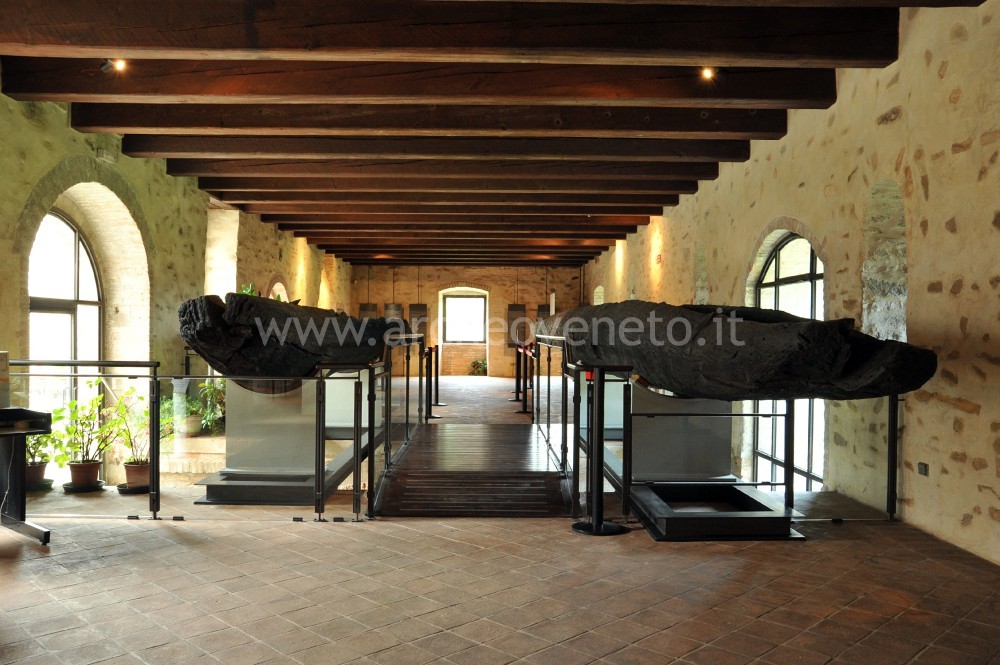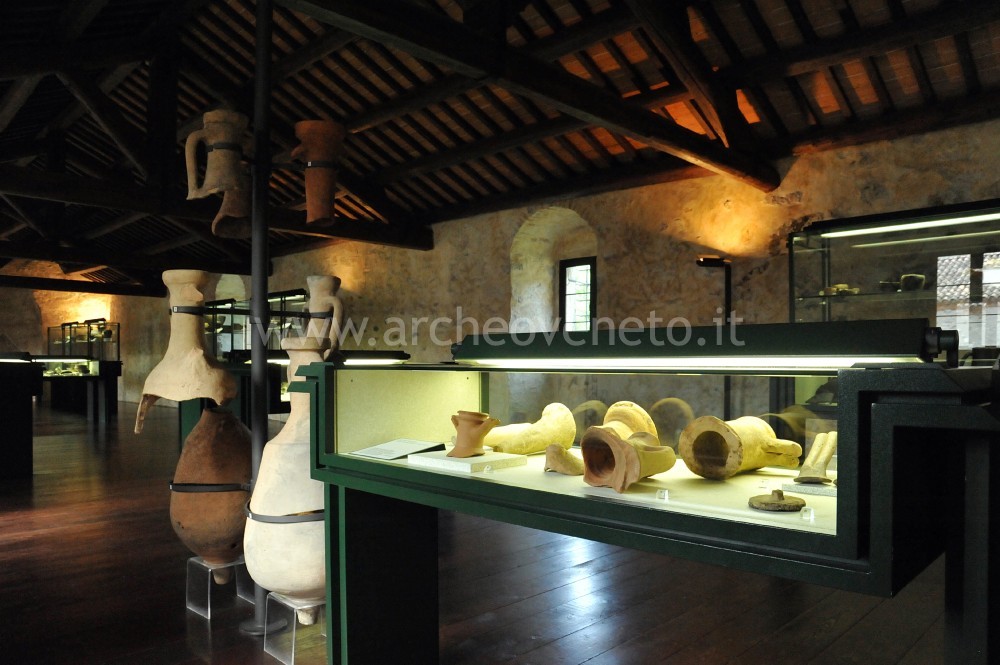| Via Castel San Martino 23 - 35030 Cervarese Santa Croce (PD)
Tel. 049 9915425 (custode) - 0429 647157 (informazioni) - Fax 049 9915425 - 0429 647157 |
Web site http://www.musei.padova.it |
|
Summary
The museum of the Bacchiglione river is located inside the Castle of San Martino della Vaneza, which was donated by the Papafava-Carraresi family to the Province of Padua for cultural purposes. The museum is divided into two parts: the geo-morphological section and the archaeological one. Both of them display finds that were discovered inside or near the bed of the Bracchiglione river during the excavations carried out by the so called “sabbionari” (people extracting sand from the riverbed to use it as building material) and thanks to the underwater surveys commissioned to the scuba divers by numerous associations of Padua starting from the 70’s.Collection history
In the 70’s the ArcheoClub of Padua (now called Società Archeologica di Padova – Archaeological Association of Padua), the Club Sommozzatori di Padova (Divers’s club of Padua) and the ArcheoSub-Metamauco cooperative collected a set of finds discovered in the stretch of the river between Cervarese Santa Croce and Ponte San Nicolò-Canale Roncajette. Starting from 1990 the regional board of the ministry of cultural heritage and environmental conservation in charge of archaeology (Soprintendenza Archeologica del Veneto) has been carrying out numerous and well-structured surveys in order to understand the kind of settlement that characterized the area. Thanks to this study, in 1995 it was possible to accomplish the first expositive plan of the museum.
|
 |  |
|
Visiting
Admission: Negli orari di apertura
Solo su prenotazione
Su prenotazione;
Ticket: Si;
Price: Full fare: 2.60 €; reduced fare (members of the armed forces, university students, seniors 65+): 1.10 €; Reduced fare (holders of the Padova card): 2.00 €; free admission: children below 8 years of age and escorts of school classes and groups.;
 School access School access
|
Recommended tour time (minutes): 60 |
|
Services for visitors
 Toilet Toilet Parking Parking Bookshop Bookshop |
Educational Services
 Brochure BrochureItalian, English, French, German  Information boards Information boardsItalian  Captions under exhibits Captions under exhibitsItalian  Multilingual ads: Inglese
Francese
Tedesco Multilingual ads: Inglese
Francese
TedescoBrochures  Guided Tours Guided Tours Booking compulsory and only for groups (min. 15, max. 30 people), reduced fare: 30 €, 1 hour; 50 € 2 hours.  Educational activities Educational activities Educational workshops Educational workshops Library and documentation centre Library and documentation centre Other activities Other activities |
Bibliography
| Biachin Citton E. 1995, Museo archeologico del fiume Bacchiglione (Cervarese S. Croce, Padova), in Guide archeologiche. Preistoria e Protostoria in Italia: Veneto e Friuli Venezia Giulia, VII, Forlì, pp. 119-125. |
| Bianchin Citton E. 1996, Il museo del fiume Bacchiglione (Cervarese Santa Croce - Padova), in Quaderni di Archeologia del Veneto, XII , pp. 194-196. |
| Aspen A. 1997, Il castello di San Martino e il Museo del Bacchiglione, in Padova e il suo territorio, 66, pp. 27-29. |
| Musei d'Italia, Guida Touring Club Italiano 2003, Milano, pp. 210. |
| Musei e raccolte archeologiche del Veneto 2004, a cura di Di Mauro A., Dosson di Casier, pp. 51-52. |
| Bonetto J. 2009, Veneto (Archeologia delle Regioni d'Italia), Roma, pp. 399-400. |

